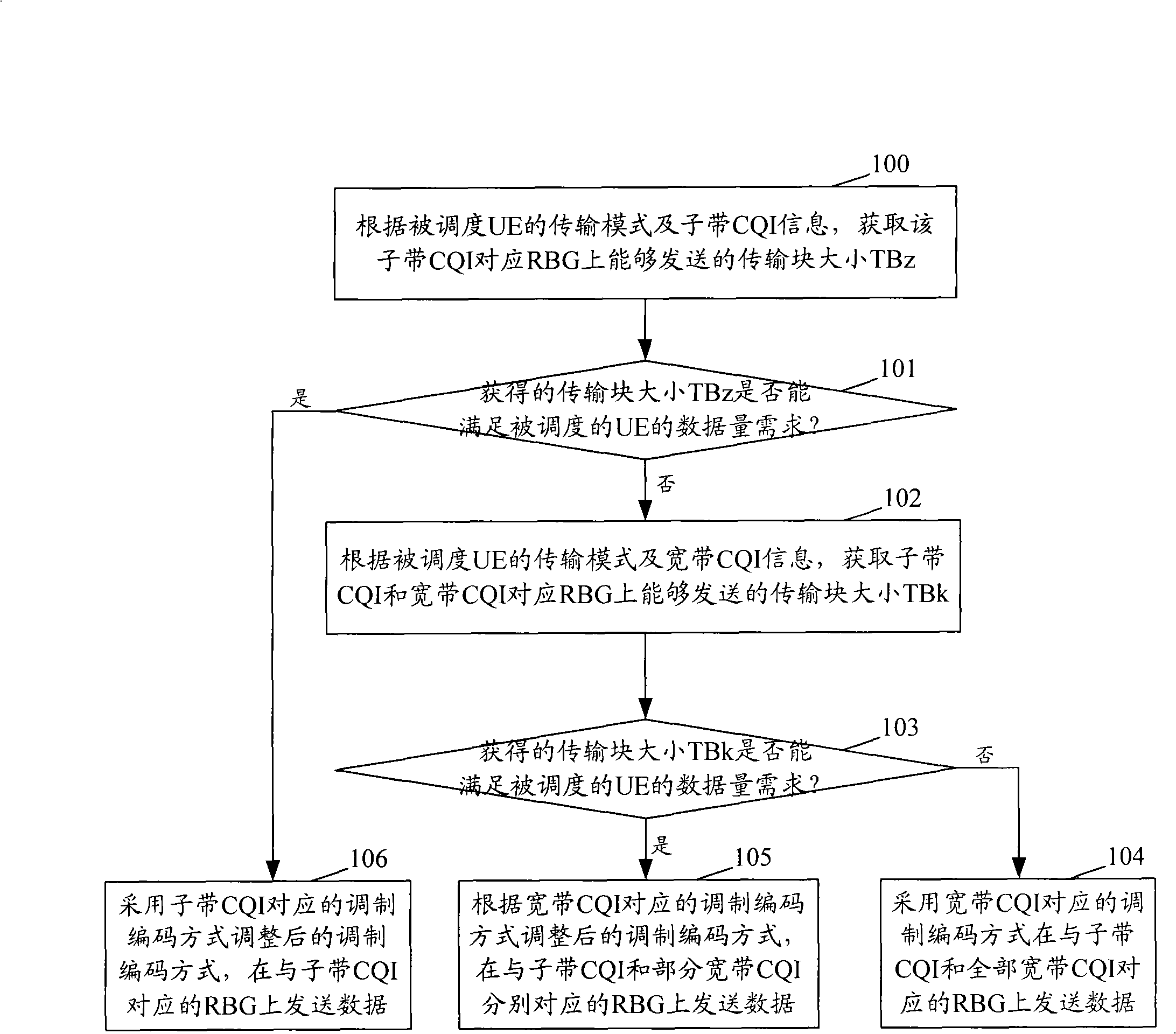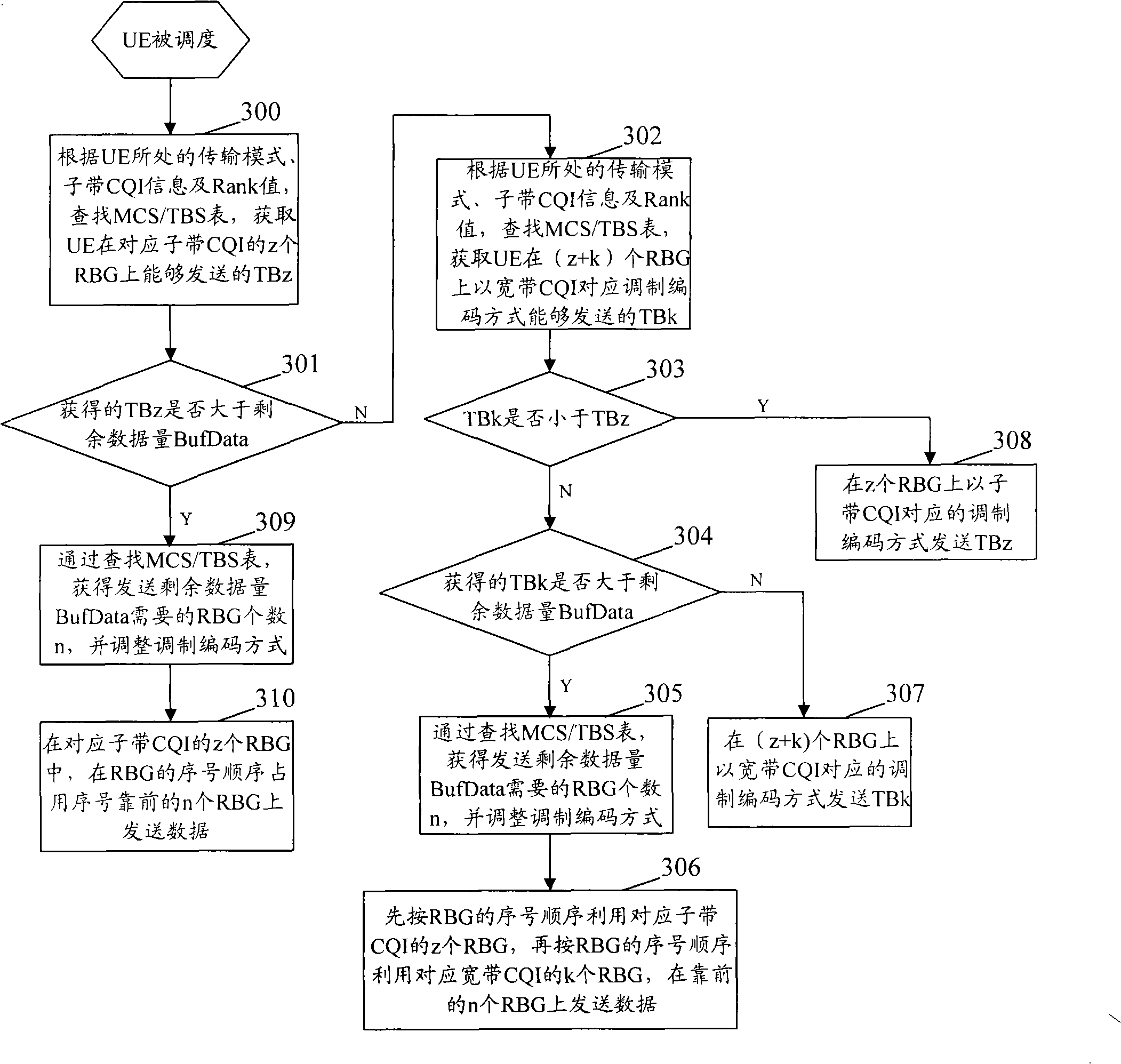Downlink self-adapting method
A downlink and self-adaptive technology, applied in radio/inductive link selection arrangements, transmission control/equalization, selection devices, etc., can solve problems such as unseen downlink self-adaptive implementation methods
- Summary
- Abstract
- Description
- Claims
- Application Information
AI Technical Summary
Problems solved by technology
Method used
Image
Examples
Embodiment 1
[0054] Embodiment 1, assuming that a UE is in the transmit diversity mode of the eNodeB and uses UE selective subband feedback. After the UE is scheduled, the number of RBGs corresponding to the subband CQI is Z, and the number of RBGs corresponding to the wideband CQI is K. The eNodeB performs single-stream transmission, and its transport block size has nothing to do with the number of layers υ, and it is assumed that the remaining data in the buffer of the scheduled UE is BufData. What needs to be explained here is that how to implement the scheduling of the UE belongs to the prior art, and will not be introduced here. figure 2 It is a flow chart of the downlink adaptive method of the present invention in which the UE is in transmit diversity mode, such as figure 2 shown, including the following steps:
[0055] Step 200: Search the MCS / TBS table according to the transmission mode of the UE and the subband CQI information, and obtain the transport block size TBz that the U...
Embodiment 2
[0070]Embodiment 2, assuming that a certain UE is in the closed-loop spatial multiplexing transmission mode of the eNodeB, using UE selective subband feedback, after the UE is scheduled, the number of RBGs corresponding to the subband CQI is Z, and the number of RBGs corresponding to the wideband CQI is Z is K, the current feedback Rank>1, the eNodeB performs dual-stream transmission, the number of layers used for transmission υ=Rank, and it is assumed that the remaining data in the buffer of the scheduled UE is BufData. What needs to be explained here is that how to implement the scheduling of the UE belongs to the prior art, and will not be introduced here. image 3 It is a flowchart of the downlink adaptive method of the present invention when the UE is in the closed-loop spatial multiplexing transmission mode, such as image 3 shown, including the following steps:
[0071] Step 300: Search the MCS / TBS table according to the transmission mode of the UE and the subband CQI ...
PUM
 Login to View More
Login to View More Abstract
Description
Claims
Application Information
 Login to View More
Login to View More - R&D
- Intellectual Property
- Life Sciences
- Materials
- Tech Scout
- Unparalleled Data Quality
- Higher Quality Content
- 60% Fewer Hallucinations
Browse by: Latest US Patents, China's latest patents, Technical Efficacy Thesaurus, Application Domain, Technology Topic, Popular Technical Reports.
© 2025 PatSnap. All rights reserved.Legal|Privacy policy|Modern Slavery Act Transparency Statement|Sitemap|About US| Contact US: help@patsnap.com



